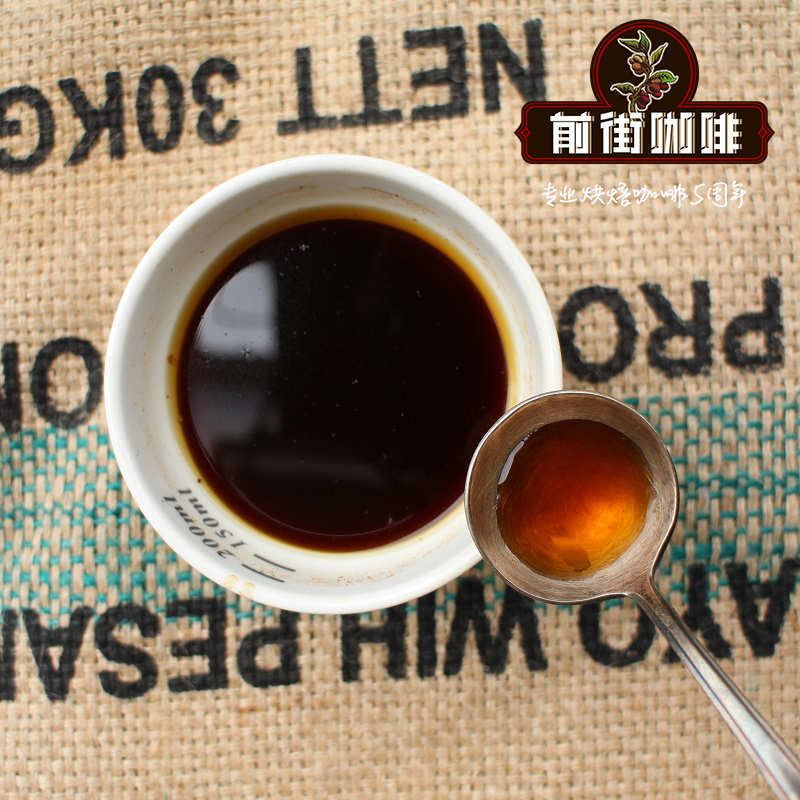How does Columbia taste? introduction to Columbia's exquisite flavor

Professional coffee knowledge exchange more coffee bean information please follow the coffee workshop (Wechat official account cafe_style)
Front Street Coffee-Columbia exquisite flavor description, pink bourbon brewing and sharing
One of the most famous producing areas is Nalinglong province. The other real name is Narino, literally translated as "Narinho", and translated as "Na Linglong" by the domestic coffee industry. Na Linglong has the natural conditions for producing high-quality coffee, close to the equator, about 1 degree north latitude, sufficient light throughout the year; more than 1600 meters above sea level, and snow-capped peaks are not uncommon all the year round.
Steep mountains and long and steep slopes bring temperature diversity. Warm and moist air rising from the canyon protects coffee grown at high altitude from the threat of frost, and coffee can be grown smoothly at a height of 2300 meters. Volcanic soil provides rich nutrients for coffee growth.
Nalinglong has a peak distribution of rainfall throughout the year, with a rainy season that lasts from October of that year to May of the following year, and the dry season lasts for June, July and August.
However, even in dry months, coffee farmers do not have to worry too much that warm trade winds from the southern continent will produce water vapor when they meet on cooler nights, replenishing coffee trees.
Usually, after continuous drying followed by a rain, the coffee tree will usher in the flowering season. After the first precipitation in Nalinglong, September, the coffee flowering season will be ushered in. Accordingly, the harvest season will begin in April the following year, and the high-altitude producing areas may last until August.
Na Linglong has a balanced and soft flavor, clean and rich flavors of apricot, grapefruit and toffee, so it is popular with coffee gluttons. At the same time, the quality of Colombian coffee beans is divided into more than 200 grades, with SUPERMO as the highest grade, followed by EXCELSO, but only selected coffee with beans No. 18 (diameter 18x64 inches in diameter) can be included in the selection. And Na Linglong is the SUPERMO quality. And this is also closely related to Na Linglong's choice of high-quality Kaddura varieties and high-quality natural conditions.
A Colombian powder bourbon in former Street Coffee as an example
Suggested cooking method: hand flushing
1. Filter cup: V60
2. Water temperature: 88-90 ℃
3. Degree of grinding: medium and fine grinding (BG 5R: the pass rate of Chinese standard No. 20 screen is 58%), that is, the thickness of white granulated sugar
4. Ratio of powder to water: 1:15
Extraction method: 15 grams of powder, steamed with 30 grams of water for 30 seconds, injection to 118 grams, continue to inject water to 227 grams when the water level is about to expose the powder bed, remove the filter cup when the water level is about to expose the powder bed, and the extraction time is 2 minutes.
Flavor: the whole is relatively clean and balanced, feeling more light and smooth, with peach, plum, grapefruit, cream, roasted almonds, cocoa flavor, lingering tea and flower aromas.
END
Important Notice :
前街咖啡 FrontStreet Coffee has moved to new addredd:
FrontStreet Coffee Address: 315,Donghua East Road,GuangZhou
Tel:020 38364473
- Prev

What are the flavor and taste characteristics of Sidamo coffee beans? Sidamo Sakuran Coffee 6.0 description of hand brewing flavor
Professional coffee knowledge exchange more coffee bean information please follow the coffee workshop (Wechat official account cafe_style) Qianjie Coffee-Sidamo Coffee characteristics, taste, flavor description share Sidamo coffee flavor is very diverse. Different soil types, microclimates and countless native coffee species, producing areas
- Next

What are the top ten best coffee beans? introduction to the top ten coffee bean brands in the world
Professional coffee knowledge exchange more coffee bean information please follow the coffee workshop (Wechat official account cafe_style) Qianjie Coffee-Ten famous Coffee introduction 1. Yirgacheffe coffee of Ethiopia, though petite, is gentle, delicate and sweet. As the hometown of coffee, Ethiopia has thousands of years of planting history and processing tradition.
Related
- Beginners will see the "Coffee pull flower" guide!
- What is the difference between ice blog purified milk and ordinary milk coffee?
- Why is the Philippines the largest producer of crops in Liberia?
- For coffee extraction, should the fine powder be retained?
- How does extracted espresso fill pressed powder? How much strength does it take to press the powder?
- How to make jasmine cold extract coffee? Is the jasmine + latte good?
- Will this little toy really make the coffee taste better? How does Lily Drip affect coffee extraction?
- Will the action of slapping the filter cup also affect coffee extraction?
- What's the difference between powder-to-water ratio and powder-to-liquid ratio?
- What is the Ethiopian local species? What does it have to do with Heirloom native species?

